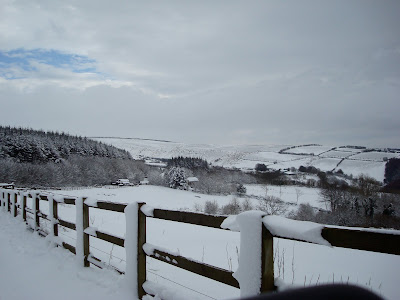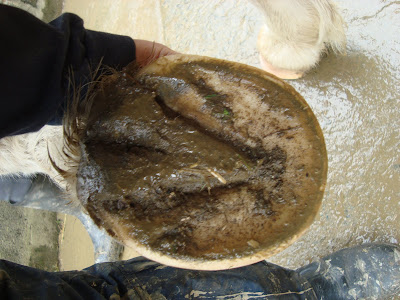

...so following on from the photos I posted
yesterday, I should have known that all those who commented would be too fly to catch out :-)
The answer of course, as they got spot on, was that each of these horses required "odd" feet as a result of either their conformation or a previous injury.
The question of foot balance is one which occupies farriers and trimmers a great deal, and there are multiple different theories out there.
One of the common suggestions is that a T square is right way to set foot balance, on the basis that "a horse's leg is like a table" and works best when the heels are at right angles to the leg. Unfortunately, of course, horse's legs aren't quite that simple, even when they are static, and once they are moving, the table analogy becomes quite useless.
David Gill, a farrier, sums it up nicely in his book "Farriery: the whole horse concept" when he says "So, should the T-square be used to judge hoof balance? Well only if our horses are as wooden and lifeless as tables".
Hoof balance is very, very complicated, particularly if you are going to shoe a horse, because you are imposing your assessment of the correct hoof balance onto the horse's hoof - if you get it wrong, the horse will inevitably suffer from stresses and strains to the limb, and possibly other areas of the body as a consequence. At worst, getting hoof balance wrong will lame a horse.
The beauty about keeping a horse barefoot is that its easier for the horse to demonstrate the hoof balance it needs for soundness, and its interesting to note that "correct" balance for the horse does not necessarily correspond with our ideals of the perfect hoof.
The one thing that all the hooves
here and in the photo above have in common is that
all of these horses were sound and capable of sustained hard work over even very challenging surfaces provided that their "odd" hoof balance was respected.
All three horses had "good" feet in shoes - the photos above show the same horse, the lower one when he was just out of shoes. His hooves look prettier, but he was very lame. With the other horses, it was a similar story - their hooves in shoes were much more symmetrical and had good quality hoof wall but all three horses were also long-term lame. Out of shoes, their hoof balance changed radically, and as a result they came sound.
A word of warning, though - the problem with this sort of hoof balance is that it can be marred not only by incorrect shoeing but also by trimming. Very many barefoot "schools" require hooves to be trimmed to a model, and trimming to these methods would lame these horses just as surely as shoes would. By trimming their hooves into a more "ideal" shape you actually render horses with hooves like this immediately less sound.



























































